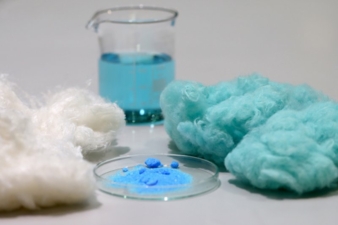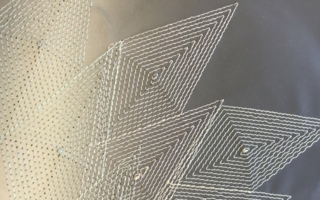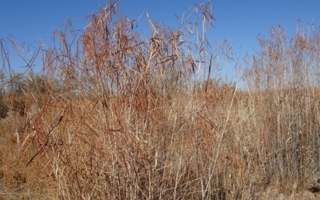04/09/2023 – Using active ingredients more efficiently in textiles — auf Deutsch lesen
Wash-resistant equipment of Lyocell functional fibers
Functional textiles are all the rage. In addition to wearer comfort, durability and fashionable chic, a garment should also regulate moisture, absorb temperature peaks or have an antimicrobial effect.
Good dyeability and crease resistance are also desirable. Only a textile that survives the entire processing chain (fiber and yarn production, weaving/knitting, dyeing/finishing) and everyday use without major loss of function will satisfy consumers. At the same time, a permanent active ingredient equipment can extend the wear time and thus counteract an environmentally and climate-damaging fast-fashion trend. The “Cell Solution Bioactive” functional fiber developed at the Thuringian Institute for Textile and Plastics Research (TITK) convinces with its high antimicrobial and antiviral functionality and long-lasting release of active ingredients. It is manufactured using the patented “Alceru®” process. This modified Lyocell process is a closed-loop process with up to 99% solvent recovery using cellulose as the main raw material.
Strong binding into innermost fiber layers
The “Cell Solution Bioactive” fiber is produced in a three-step process. In the actual “Alceru®” process, a polymer of the polyacrylate class is homogeneously distributed in low concentration (< 10%) in a spinning solution of cellulose and solvent. Basic requirements are a very small particle size of the additive and intensive mixing of the spinning solution. Only in this way is the additive firmly incorporated into the fibrillar structure of the cellulose during the dry/wet spinning process and evenly distributed over the entire fiber cross-section. Subsequently, the fiber is treated with a solution of a metal salt (Ag, Cu, Zn), thus finally fixing the metal ion in it*. This three-step technology, in contrast to finishes on the fiber surface, leads to a strong binding of the metal ion into the innermost layers of the fiber and at the same time allows the adjustment of the active ingredient concentration (% range). Consequently, a controlled migration (sub-micro range) of the active ingredient to the surface is adjustable.
Additives can act significantly longer
This depot/release function enables the high washing permanence as well as textile processing even under harsh conditions. Thus, the fiber could be subjected to bleaching and dyeing processes (direct, reactive, HT), which led to the expected decrease of the active ingredient concentration. Subsequent household washes resulted in further loss (see Fig. 1), but high antibacterial activity is still assured. This high active ingredient efficiency allows the use of small proportions (2–6%) in the textile composite, as shown in Fig. 2 for a needle punch fleece with 6% “Cell Solution Bioactive” content. As a result, the environmental impact is significantly reduced, while cost efficiency increases due to longer efficacy with the same additive input. Staple fibers can be produced in counts from 2.3 to 6.7 dtex, with the smaller titers being suitable for yarn counts up to NM50. This results in an application spectrum ranging from textiles in the hospital sector to nonwovens for filters. When copper is used, a high antiviral effect is guaranteed in addition to the antibacterial effect. This depot/release function is also used for other fiber types in the “Cell Solution” family: including the “Skin Ccare” fiber with vitamin E or lanolin, and the “Protection” fiber with permethrin as an insect repellent.
* Footnote 1 Wendler F, Bauer J, Schulze T. Wash-resistant bioactive cellulose fiber having antibacterial and antiviral properties. Patent, DE 10 2022 109 459 A1 2022.10.27




